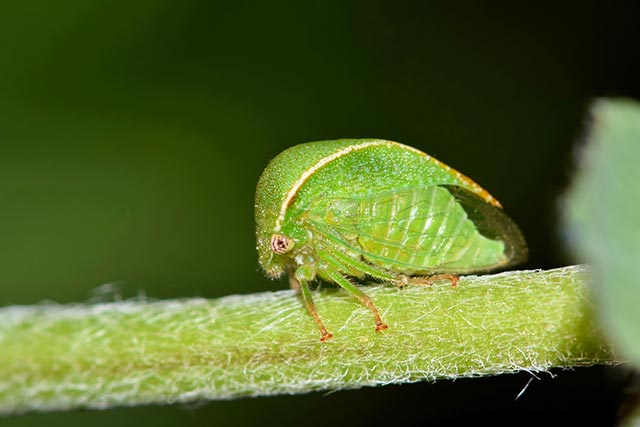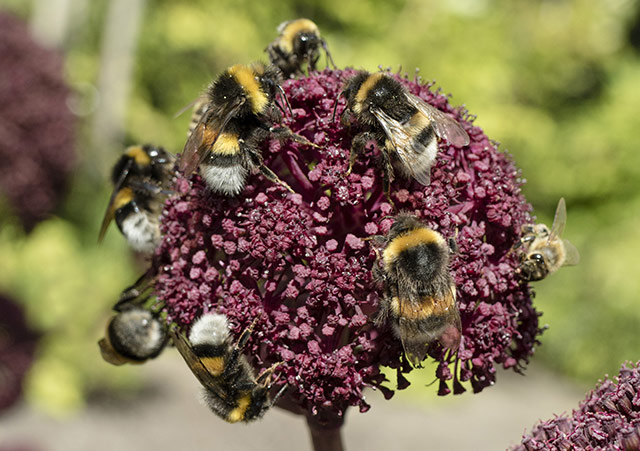Planthoppers “shake their bodies” to attract their mates
08/30/2019 / By Evangelyn Rodriguez

Planthoppers are Hemiptera or “true bugs” that are of great interest to scientists due to their destructive nature. Not only does their strange way of eating cause damage to some plants, it also makes them unwitting vectors of plant diseases. Recently, however, a group of researchers from the University of Oxford in the U.K. discovered something about these plant-feeding insects that doesn’t involve their feeding mechanism. Instead, it involves a “snapping organ” nobody knew they had that enables them to shake their bodies at astonishing speeds when they’re courting. In their newly published study which appeared in the journal PLOS Biology, the researchers discussed their findings and explained how amorous planthoppers produce their mating call and achieve vibrational communication — a feat initially deemed to be challenging for animals of their size.
Planthoppers and plant diseases
Planthoppers from the order Fulgoromorpha are small insects whose body shapes and colors mimic the leaves or other parts of the plants in their environment. Over 12,000 species of planthoppers are known to exist today, and they vary in characteristics like body markings, color, geographic location, and plant preferences.
Despite their size, planthoppers can destroy plants when their population swells. Some planthoppers, like the brown planthopper, are regarded as pests and target economically important crops like rice. Other species of planthoppers can be found in home gardens. These garden bugs can easily be dealt with using insecticidal soaps and sticky traps, or by blasting them with water from a hose. (Related: DIY solutions for natural pest control to allow your garden to flourish.)
Planthoppers feed on plants by piercing their cells and siphoning out their contents. This method of feeding can cause great damage to less sturdy plants and also makes planthoppers great carriers of plant diseases. For instance, the specialized bacteria called phytoplasmas, which cause the mild yellowing and death of important crops like sugarcane and coconuts, are transmitted by planthoppers in this way.
Phytoplasmas are parasites of plant phloem (plant vascular tissue) that planthoppers feed on. Once these parasitic bacteria infiltrate the planthoppers’ bodies, they move through various systems and colonize the insects’ salivary glands. The planthoppers then transmit them unknowingly to the next plant they feed on. Planthoppers are also among the most common insect vectors of pathogenic plant viruses.
Planthoppers communicate using vibrations that spread far and wide
Plant diseases are not the only things planthoppers are good at transmitting.
According to British researchers, these fascinating creatures can also transmit vibrational signals that travel along plant stems and leaves to attract mates from afar. Planthoppers produce these vibrations through the fast, rhythmic motions of their abdomen, achieved using a combination of muscle action and elastic recoil.
Initially believed to be impossible for small animals, the researchers discovered that this type of vibrational communication is made possible by a complex structure they dubbed the “snapping organ.” This part of the planthoppers’ anatomy snaps open and close with incredible speed via the fast release of stored elastic energy by the insects’ tiny muscles. When released in a cyclical manner, this stored energy allows planthoppers to shake their abdomens up and down repeatedly and produce vibrations that can travel through the different parts of plants.
The discovery of this surprising mechanism came by accident. The lead author of the study, Leonidas-Romanos Davranoglou, was studying the evolutionary diversity of planthoppers when he noticed something unusual in the 3D images he was inspecting. Deciding to investigate further, he and his fellow researchers collected hundreds of live planthoppers in Athens and studied them in their lab in Oxford using various techniques and high-speed video recordings.
The researchers found that the vibratory “snapping organ” is present in all the many different species of planthoppers, suggesting that it is their common yet unusual means of communicating with each other.
Dr. Beth Mortimer, co-author of the study, says that even economically important pest species like the brown planthopper use this organ to communicate.
“Understanding how these insects signal to each other may help in disrupting their communication channels or detecting their calls,” she explained.
This may prove useful for the development of more efficient ways of dealing with planthoppers species, which are considered serious pests in the developing world.
Sources include:
Tagged Under: agriculture, bugs, crops, discoveries, disease carriers, disease transmission, Fulgoromorpha, garden bugs, insects, pests, plant diseases, planthoppers, research, vibrational communication, vibrational signals, weird science
RECENT NEWS & ARTICLES
COPYRIGHT © 2017 ENVIRON NEWS



















